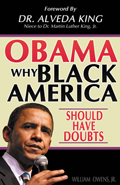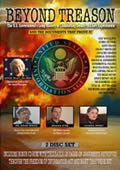THE
THREE 13TH AMENDMENTS
PART 1 of 2
By
Jon Christian Ryter
December 17, 2009
NewsWithViews.com
There are two amendments which appear in the US Constitution that were fraudulently declared ratified by then Secretary of State Philander P. Knox and US Solicitor General Joshua Reuben Clark. They are the 16th and 17th Amendments to the US Constitution. The JP Morgan-Rockefeller-Rothschild international banking cartel (which actually encompasses about 100 of the wealthiest families in the world) swapped New Jersey Gov. Thomas Woodrow Wilson the White House for their own private central bank. In doing so, they perpetuated the fraud on the people of the United States. To make a central bank viable, the bankers needed to be able to levy the incomes of the people of the United States. To do that, they needed Congress to enact a federal income tax. There was only one problem with that. Assessing an unapportioned tax (that unfairly and punitively targets one citizen over another) was specifically prohibited by the Constitution. The bankers needed a constitutional amendment to correct Article 1 § 8. The bankers had one other problem with this plan. Every attempt to create a permanent central bank or, for that matter, a new temporary one, met fierce resistance from the States and from State banks. To get a constitutional resolution through Congress, it would first be necessary to remove the States from the equation of governance at the federal level. The 17th Amendment did that.
Now before we go any farther, stop for a minute and ask yourself a question. But first, let's set the scene so when we frame the question, you have a true understanding of how our government was originally set up, and why it worked so well until 1913. The year is 1907. It had been 120 years since a confederation of sovereign States formed a nation. The States designated, through a Constitution, that a Chief Executive would be elected every four years who would represent them—the States—and their interests before the nations of the world. (Keep in mind, many times the interests of the States differ from those of the people who, separately, would be represented by the House of Representatives). The States, the People and the Executive would be co-equal and, jointly, those three bodies would rule the nation. That's what made the United States of America a Republic. Representing the interests of each State were two Senators, giving each State—regardless of its size—equal stature in the Senate chamber. Between the two bodies, the Senate is more powerful since Senators serve terms three times as long as the Representatives. Add this final picture to your thought processes. You are a governor, a State Senator or a State representative or assemblyman. You—not the people—have been electing your US Senators for 120 years. They work you, not the people. You elect the President of the United States, since he works for you. Not the people. Okay. You now have the picture.
The US Congress submits a constitutional resolution to strip you of your power. You will no longer elect the Senators. You will no longer control them. Nor will you control the President of the United States since you will no longer have any power in Washington, DC. Our power, as citizens of the United States extends no farther than selecting between a slate of candidates handpicked by someone other than ourselves. Prior to the "ratification" of the 17th Amendment, the State legislatures actually picked the candidates—and elected them. If you were a State Senator or representative, would you vote to surrender your power in Washington, DC by surrendering your State's right to control the US Senate? Of course you wouldn't. Yet, according to Knox and Clark, that is precisely what the States did. (Since the purpose of this article is to deal not with the fraud involved in declaring both the 16th and 17th Amendments ratified when they weren't, but with three entirely different 13th Amendments, supposedly with the first one being ratified on April 10, 1810 (although the House Joint Resolution was not enacted by Congress until May 1, 1810).
It was actually proposed on April 27, 1810. The second one was submitted on March 2, 1861 by the 36th Congress, and the third one was proposed on Jan. 31, 1865 and ratified on Dec. 6, 1865 by the 38th Congress, we will leave the discussion of the 16th Amendment and the 17th Amendment for the time being. (If you wish more information on the fraudulent ratification of those amendments, click on "Search", in the left column, and enter the words 16th Amendment and it will bring up every reference to the 16th or 17th Amendments on this website. Or, for even more information, you can purchase a copy of my book, Whatever Happened to America?. Click on the book cover on the left.)
Let's take them in reverse order, since everyone is familiar with the 13th Amendment that was ratified on Dec. 6, 1865. It ended slavery in the United States. History teaches that the 13th Amendment was an extension of the Emancipation Proclamation, issued by President Abraham Lincoln on Wednesday, Sept., 22, 1862. While several historians wrote that Lincoln delivered the proclamation from the Antietam battlefield, known as the Battle of Sharpsburg by Southern historians (or even as the Battle of the Cornfields) at Sharpsburg, Maryland, Lincoln did not go to Sharpsburg until Oct. 3, 1862—11 days after the proclamation was issued to speak directly with Gen. George McClellan in order to understand his logic for not pursuing Lee when the Confederate army scurried back across the Potomac, crushing Lee and ending the war somewhere in Virginia. The reason was that while history (always written by the victors) credited McClellan with a victory at Sharpsburg, Lee actually won the battle. He wisely decided to retreat back across the Potomac when massive Union reinforcements arrived on Sept. 18. Lincoln fired McClellan on Nov. 5 and replaced him with one of his commanders, Gen. Ambrose Burnside, two days later. The only contribution Burnside made to American history is that sideburns are named after him.
The Dec. 6, 1865 13th Amendment
The Lincoln Administration, which was losing the war with the South, learned in June, 1862 that England was preparing to officially recognize the Confederates States of America as a separate and distinct nation. The president held a cabinet meeting on July 22, 1862. Attending the meeting were Attorney General Edward Bates, Postmaster-General Montgomery Blair, Secretary of States William Henry Seward, Secretary of War Edwin M. Stanton and Treasury Secretary Salmon Portland Chase. Lincoln removed the Proclamation from the center drawer in his desk and read it to his cabinet, adding: "I will not surrender this game leaving any available card unplayed." Seward, who believed the Proclamation would force England to abort is planned diplomacy to the South, also thought that "...it may be viewed as the last measure of an exhausted government, a cry for help. It will be considered our last, last shriek on the retreat." When Seward said that, Lincoln returned the Proclamation to his desk and locked the drawer. Stanton, an antislavery Jacobin, and Bates, wanted "...immediate promulgation for maximum effect." Blair noted that Lincoln gained all of his war support from his pledge to Congress, his generals and the American people, the current "border dispute" with the South was not over slavery. Blair pragmatically noted that if Lincoln issued the Emancipation Proclamation the Republicans would lose the midterm election in November.
Lincoln, Seward and Stanton knew there were two reasons why the Emancipation Proclamation had to be issued. And, neither of them had anything to do with breaking the yoke of slavery. In fact, when the Proclamation was read on Sept. 22, it clearly and very specifically did not free any slaves held in any Northern State, nor in any Southern State bordering a Northern State (except Jefferson County in western Virginia). Since Lincoln had no authority in the South, the Emancipation Proclamation freed no slaves there, either. The only area where any slaves were actually freed, was in Jefferson County, West Virginia where abolitionist John Brown was tried and hung in Charles Town, WV in 1859—for freeing slaves. (Brown, who raided a federal armory in Harpers Ferry, killing 7 people, was captured by then Col. Robert E. Lee. Brown was tried for treason against the State of Virginia. He was found guilty and hung. [West Virginia seceded from Virginia in 1861 and became a Union State in 1863.])
Seward urged Lincoln not to issue the Emancipation Proclamation until after a major Union victory—which he said needed to come quickly. Friends in England told Seward that England planned to recognize the Confederacy immediately following their next victory. That, by the way, is what brought Gen. Robert E. Lee to Sharpsburg on Sept. 17. Both sides recognized that a major victory was the key to getting, or stopping, England's recognition, and support of, the Confederate States. And second, Stanton and his generals believed that by freeing the slaves in the deep South, they would start a slave revolt that would require Lee to divert needed men and resources from the war in order to protect what was left of the economy of the South.
The third 13th Amendment (the abolition of slavery) was proposed in House Joint Resolution on Jan. 31, 1865 and ratified on Dec. 6, 1865 some eight and one half months after the assassination of Lincoln. The amendment reads: "Section 1. Neither slavery nor involuntary servitude, except as a punishment for crime whereof the party shall have been duly convicted, shall exist within the United States, or any place subject to their jurisdiction. Section 2. Congress shall have power to enforce this article by appropriate legislation."
The Mar. 2, 1861 13th Amendment
Fear of federalist abuse of power of the hands of the Jacobin Republicans with the election of Abraham Lincoln as the nation's 16th President caused seven States to secede before the inauguration of Lincoln on Mar. 4, 1861. In an attempt to draw South Carolina (Dec. 6, 1860); Mississippi (Jan. 9, 1861); Florida (Jan. 10, 1861); Alabama (Jan. 11, 1861), Georgia (Jan. 19, 1861), Louisiana (Jan. 26, 1861) and Texas (Feb. 1, 1861) back into the nation before the Union was shattered beyond repair, President James Buchanan asked the 36th Congress to prepare a constitutional amendment guaranteeing States Rights. On March 2, 1861—two days before Lincoln's inauguration—the 36th Congress placed a House Joint Resolution 12 Stat. 251, the 13th Amendment to the Constitution, on Buchanan's desk. It read: "Resolved by the Senate and House of Representatives of the United States of America in Congress assembled, That the following article be proposed to the several States as an amendment to the Constitution of the United States, which, when ratified by three-fourths of said Legislatures, shall be valid, to all intents and purposes, as part of the said Constitution, viz: "ARTICLE THIRTEEN, No amendment shall be made to the Constitution which will authorize or give to Congress the power to abolish or interfere, within any State, with the domestic institutions thereof, including that of persons held to labor or service by the laws of said State."
Time limits for passage of Constitutional Amendments did not begin until 1933. (The 20th Amendment was the first one to include a time limit for ratification.) Thus, the States may still ratify the Mar. 2, 1861 House Joint Resolution on States Rights and deny the federal government the power to interfere with the States in any way. What that means is that ratifying the Mar. 2, 1861 proposed constitutional amendment would create a 28th Amendment that will abrogate the federal governments claim to superior sovereignty under the "commerce" and "welfare" clauses of the Preamble to the Constitution (which actually do not confer any rights on the federal government, but is simply a explanatory statement. The authority of the Constitution begins with Article I.)
|
Subscribe to the NewsWithViews Daily News Alerts! |
Keep in mind, ratification is always contingent on the number of States in existence at the time of ratification, not at the time of submitting a resolution for ratification. That means, to ratify Buchanan's 13th Amendment, 38 States must ratify it. Since only two States ever ratified Buchanan's States' Right amendment, 36 States are still needed. As you will see later, that was the problem with the May 1, 1810 Nobility 13th Amendment resolution. For part two click below.
Click here for part -----> 2,

















